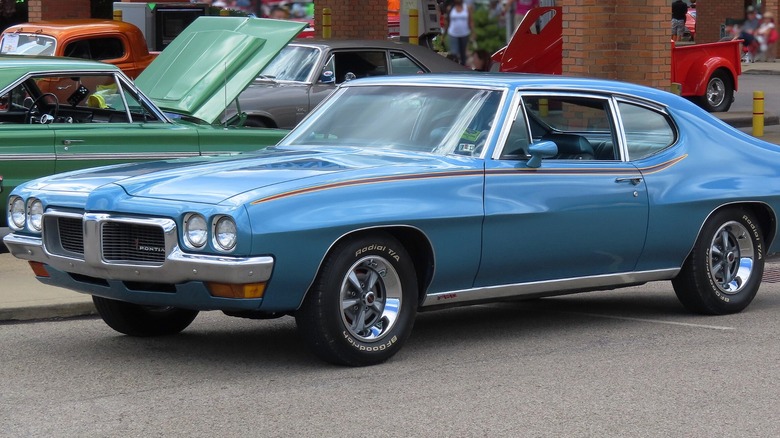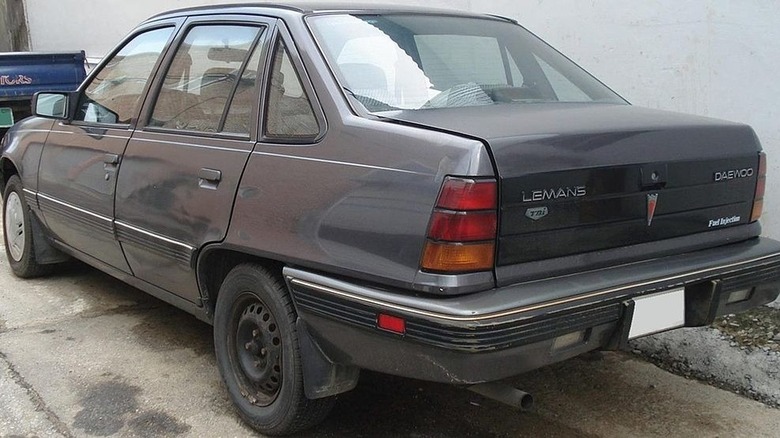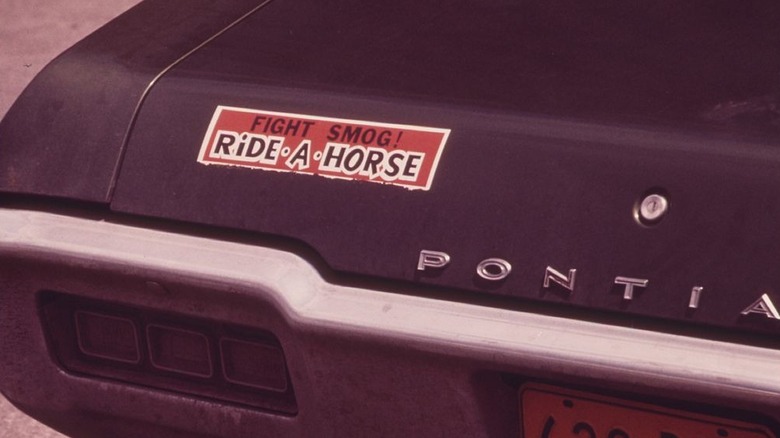All About The 1970 Pontiac LeMans
The last of the true Pontiac LeMans rolled off showroom floors in the United States in 1981. Despite running into a stop sign in America, the LeMans continued to be made in Canada until 1983 and oddly reappeared back in the States as a weird foreign amalgam in 1987. To understand what made the 1970 model so special, we need first to peel back the layers of what led up to it.
By 1993 (and if we're being honest, 1981), the LeMans had become so watered down from the muscley DNA-laced car it once had been in its heyday that it was wholly unrecognizable. Many people likely have no idea that the legendary LeMans was more than just their granddaddy's gas-guzzling sedan, their dad's cheap economy import, or a famous endurance race in France.
The first LeMans name appeared in 1961 as the highest trim level option on Pontiac's coupe and ragtop Tempest, which at the time was a compact "economy" car developed to compete with the "people's car," the Volkswagen Beetle, which at the time was selling more than 1 million units a year.
The Tempest was so successful Motor Trend named it "Car of The Year" in '61, calling it one of the most advanced vehicles built in America in the last 20 years. Meanwhile, the LeMans trim turned out to be so popular that Pontiac decided to make it into its own car model starting in 1963.
[Featured image by MercurySable99 via Wikimedia Commons | Cropped and scaled | CC BY-SA 4.0]
LeMans took a long strange trip
Pontiac built five "true" LeMans generations in the U.S. After the first in 1963 came the second generation, which lasted from 1964 to 1967, the third between 1968 and 1972, the fourth from 1973 to 1977, and the fifth from 1978 to 1981.
The foreign-made "sixth-gen" model (sometimes referred to sarcastically as having a lowercase "M") was basically a modified German Opel Kadett, built by Daewoo in South Korea, and imported to the U.S. This Lemon is universally considered not to be a true LeMans.
However, the LeMans really didn't come into its own until 1970. Ironically, the GTO (a car with tons of coolness all its own) started humbly enough as an optional trim package for the LeMans in '64.
During 1970, The Beatles broke up, Houston had a problem with its Apollo 13 space mission, and Pontiac banged out over 156,000 Le Mans and Le Mans Sport models, 4,670 of which had the rare drop tops. Behind the scenes, the Federal Government was working on legislation that would drastically reduce the emissions from new automobiles (more on that later).
The 1970 GM A-bodied LeMans had several unique features that focused on acceleration, power, and performance. It shared some of the same components with the GTO, including sheet metal, interior components, and mechanical parts, which today allows it to be a more economical choice for collectors than the famed GTO.
[Featured image by Chu via Wikimedia Commons | Cropped and scaled | CC BY-SA 3.0]
For a brief moment, the LeMans was a world beater
Some of the cooler standard equipment of the day included a "hidden" antenna in the windshield, ashtray/cigar lighter lamps, loop pile carpeting, a day/night rearview mirror, rear armrests (with ashtrays!), and tough-as-nails Morrokide (another name for Naugahyde) seats.
The Sport had all that plus goodies like a padded wood-grained dashboard, additional use of Morrokide throughout, and lamps for the glove box and ashtrays. Hardtop coupes and convertibles offered a choice of bucket or notchback bench seats.
The standard available engine was a 250 cu-in 6-cylinder V8 built by Chevy. It had hydraulic valve lifters, a Rochester one-barrel carburetor, overhead valves, and a cast-iron block. With an 8.5:1 compression, it produced 135 hp. Bigger options included a 350- or 400-cu-in engine with a 2-barrel carburetor or a 330-hp 400 CID with a 4-barrel carburetor and dual exhausts.
These big blocks could be mated with various gearbox options, including a 3-speed manual, 2-speed TurboHydramatic automatic, 3-speed manual with a heavy-duty floor shift, or a 4-speed manual with a close or wide ratio. By most accounts, this fire-breathing Pontiac was the King of Speed and routinely beat every "muscle car" that dared race it.
In 1970, 52,304 LeMans hardtop sedans (with an MSRP of $2,920), 15,255 sedans (at $2,790), 5,656 coupes ($2,735), and 3,872 of the two-door hardtop coupes ($2,795) were built. Along with 7,165 station wagons ($3,090) using the LeMans "base" also hit the streets.
The Clean Air Act shot down the muscley LeMans
In December 1970, President Nixon established the Environmental Protection Agency (EPA)to enforce, among other things, the Clean Air Act. This law required automakers to reduce emissions from all new automobiles by 90% in five years. It single-handedly slammed the brakes on an era that led to Pontiac making one of the last muscle cars just a few years later (the Trans Am Super Duty 455).
While a 335 hp 455 CID engine was still optional in 1971, it was strapped with tighter emissions equipment. GM was forced to lower compression ratios, gutting the overall horsepower output of these once majestic beasts. Simultaneously, insurance companies began raising rates exponentially on these cars to offset the losses incurred by the dreaded "lead foot."
By the following year (1972), that same big block 455 had been gutted to just 300 hp. Pontiac even stopped using its own OHC sixes and instead went with Chevy's OHV sixes, which ironically makes those particular LeMans uber-collectible. It even downgraded the GTO from its own line back to a trim option.
For a car that sprang to life as a trim package and morphed into the one that birthed the first muscle car (the Pontiac GTO), the LeMans has legit street cred that often slips under the radar.
[Featured image by the U.S. National Archives and Records Administration via Wikimedia Commons | Cropped and scaled | CC BY PUBLIC DOMAIN]


